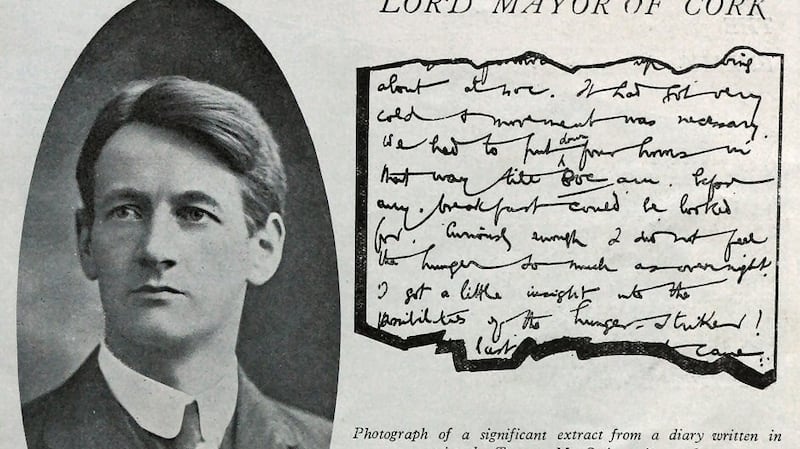As the Provisional Government continued its defence of the execution of young IRA men this month a century ago, Minister for Defence Richard Mulcahy became particularly exercised, not about the legitimacy of the executions, but the claim these men were being denied access to a priest. In the Dáil, he referred to a contemporary poster: “People of Ireland! Have you given your authority to those murderers to execute mere boys by Secret Trial, without allowing them to say goodbye to their Fathers and Mothers, and without seeing a Priest?”
In response, Mulcahy insisted “we are people who realise that man is made in the image and likeness of God, and we treat men as such; and if it is our fate to have to condemn a man to death in order to save our country, we do not consider him, as a man in that position, less made in the image and likeness of his Creator than we consider ourselves to be. And when a man is going to death he does get a priest ... what effect is it likely to have in parts of the country to be told the government here in a Catholic country sends their prisoners to their death without seeing a priest?”
There was much Mulcahy was prepared to ignore, but not this accusation. He underlined a consistent theme throughout this dark period and beyond: whatever divided a people ravaged by Civil War, they (the 93% of them who were Catholic) had their faith in common and, with that, a special regard for men of the cloth and their role. True, there were rebel, republican priests and lay republicans who believed in separation of church and state and were hostile to clerical interference, but the intense religiosity of the generation that presided over the birth and contestation of the state a century ago is striking.
[ Diarmaid Ferriter: Civil War executions remain ugly legacy of State’s foundationOpens in new window ]
It is a measure of our more secular era that not as much has been made of this during the decade of commemorations as should be. For all the admirable focus in 2016 on elevating previously submerged experiences, the assertion in the 1916 Proclamation that the Rising was being fought “in the name of God” was often elided. When Éamon de Valera, as a surviving commandant of 1916, was seeking to capitalise politically by standing in the East Clare by-election in 1917, he dismissed accusations of radicalism by telling the electorate “all his life he had been associated with priests”.

As he languished in Brixton prison during his 74-day hunger strike, one of the pivotal events of the War of Independence, Terence MacSwiney received Communion daily and insisted his protest and endurance were a result of divine intercession. He offered his death to God “for Ireland’s resurrection” and was attended throughout by Fr Dominic O’Connor. MacSwiney’s sister Mary insisted one of her brother’s final remarks was: “Thank God, there will be no more compromises now.” But there were plenty more, including the Anglo-Irish Treaty that prompted the Civil War, and some of its most trenchant opponents, as internees, also put God first: their hunger strike pledge signed in Mountjoy declared: “What I am about to suffer I offer to the glory of God and for the freedom of Ireland.”
In the aftermath of the Civil War, freedom remained secondary to God. The role of priests was frequently about ensuring control, deference and obedience and providing authoritarian certainty. Their mission was often framed negatively. In 1924 Cardinal Michael Logue told clerical students at Maynooth they would “have to meet a divided people ... who had lost much of their reverence for religion and the church”. Such was the volume of the religious army to help with that supposed challenge that by 1961 there were more priests, brothers and nuns in Ireland (15,323) than civil servants (14,695).
Novelist John McGahern later remarked that some of those priests “looked and acted as if they came from a line of swaggering, confident men who dominated field and market and whose only culture was cunning, money and brute force. Though they could be violently generous and sentimental at times, in their hearts they despised their own people.” But McGahern also suggested many “who entered the church at the time were victims themselves”. Many who supposedly had vocations for priestly work did not and were the last people who should have been put in charge of children. Forced celibacy, the early age of entry to religious training and single-sex environments compounded the problems and poisoned atmospheres. With that came secrecy, denial, protection of the Church’s reputation and assets, and near total acceptance of its status as an autonomous state within a state. As highlighted by the Murphy Report in 2009, just one chapter in an ongoing book of abuse, “all other considerations, including the welfare of children and justice for victims, were subordinated to these priorities”.













